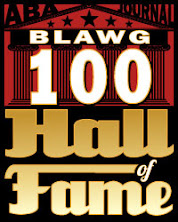LoanDepot.com, LLC v. CrossCountry Mortgage, LLC, 2023 WL 9022893, No. 22-cv-5971 (AS) (S.D.N.Y. Dec. 29, 2023)
loanDepot alleged that CCM, its chief competitor,
“improperly poached” 32 employees, and CCM and various former employees. CCM
counterclaimed for abuse of process and for violations of the Lanham Act and
related state laws; one ex-employee also brought counterclaims against
loanDepot for breach of contract and breach of the implied covenant of good
faith and fair dealing. I’m only going to discuss the false association/false advertising
bits; as to the latter, state law provides more protection than federal because
of the “commercial advertising or promotion” requirement for Lanham Act false
advertising.
Counterclaims for false association and false advertisement
under the Lanham Act, unfair competition under New York common law, and unfair
business practices under the New York Deceptive Practices Act were all based on
allegations that loanDepot sent blast marketing emails advertising loanDepot’s
services from the loanDepot email addresses of former employees after those
employees had begun working for CCM.
The false association/coordinate state law claims survived.
loanDepot allegedly violated the Lanham Act by using “the name and likeness of
CrossCountry employees, including Scott Bonora, Faheem Hossain, and others, in
false advertisements sent to potential customers in May and July 2022,” which
“wrongly passed off the products and services of CrossCountry as products and
services of loanDepot.” There was no requirement that CCM’s name or reputation
be invoked for a false association claim, because the Lanham Act also covers “reverse
passing off,” in which “A promotes B’s products under A’s name.” Thus, it
sufficed to allege that loanDepot “was falsely passing off the services of Mr.
Bonora and Mr. Hossain as the services of loanDepot rather than services of
CrossCountry.” (I’m not sure this works—at least not without secondary meaning
in Bonora and Hossain’s names.)
loanDepot argues that the names weren’t material, but CCM
alleged that “loanDepot knew that the identity of Mr. Bonora’s and Mr.
Hossain’s employer was material to those contacts, as it was important to the
decision by customers to apply for a loan or by referral sources to refer a
borrower” and that loanDepot was attempting to “influence a consumer to apply
for a loan at loanDepot, or for a referral source to refer a borrower to apply
for a loan at loanDepot.” Claims brought by former employees themselves (citing
Rubris, Inc. v. Ankura Consulting Grp., LLC, 2021 WL 7210782 (D.D.C. Mar. 26,
2021)) were distinguishable because the employee would have to allege “a
commercial interest in his name that could be damaged” and because “nothing
about the advertisement itself gives rise to a plausible inference that [the
employee’s] name holds commercial value.” And CCM pled that it lost customers
based on the use of its employees’ identities in these emails. But the court
noted that loanDepot could reprise its arguments at summary judgment (citing Reed
Const. Data Inc. v. McGraw-Hill Companies, Inc., 638 F. App’x 43, 45–46 (2d
Cir. 2016) (affirming summary judgment on Lanham Act claim when “[d]iscovery
revealed only one customer who arguably relied upon [defendant’s] advertising
in deciding between” the defendant and plaintiff)). This also allowed the
state-law unfair competition claim to move forward; the extra requirement of
bad faith was pled by alleging, inter alia, that loanDepot continued to send
the emails months after the loan officers left CCM and after CCM sent
cease-and-desist letters, and that loanDepot sent similar emails from the
accounts of other loanDepot employees who also left to join CCM.
But false advertising failed because “[m]aking allegedly
false statements to a finite number of identifiable individuals does not
constitute ‘advertisement or promotion’ for Lanham Act purposes.” It was
possible that the emails could constitute “an organized campaign to penetrate
the market,” as the Second Circuit requires, allegations that emails were sent
to “all” of a former employee’s contacts were insufficient. “These allegations
provide no information about the size of the market or the number of customers
to receive the allegedly false advertising.” Dismissed without prejudice.
The result under NY GBL §349 differed, because it requires alleging
only that “(1) the defendant’s deceptive acts were directed at consumers, (2)
the acts are misleading in a material way, and (3) the plaintiff has been
injured as a result.”





